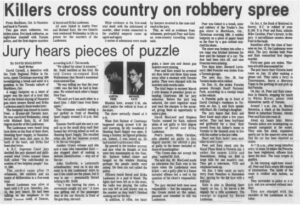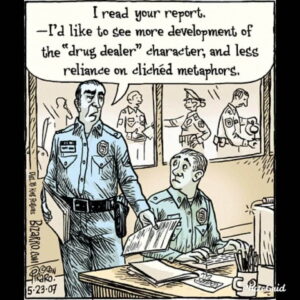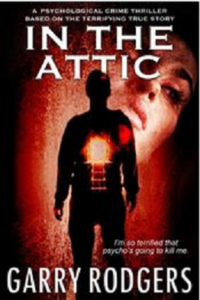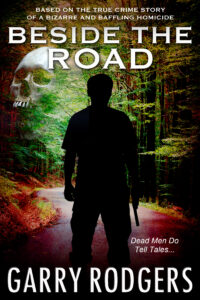If you want your book to bomb on the first page, you’ll write it like a crime report. Properly-written crime reports are boring narratives that tell “Just the Facts, Ma’am”. There’s no show, no dialogue, no plot, no characterization—not even red herrings—only a running exposition starting at A and ending at Z.
Crime reports are supposed to go that way. They’re neutral documents devoid of any soul or any sense of personal voice or individual opinion. The whole purpose of a crime report is to convey impartial details of the investigation and document evidence with links to supporting witnesses.
I’ve written lots of crime reports as a detective. I’ve written everything from prosecutor briefs to search warrant applications to wiretap affidavits to press releases. All had to be letter-perfect because they’re legal documents that’d bite your butt if you deviated outside the norm.
Crime reports follow a vanilla flow, and they’re intentionally templated. You begin by telling the end. Then, you prop-up the middle with point-by-point factual support.
Snoozeville…
 I was a writing zombie after three decades in the legal report industry. That included my stint pumping out written judgments in the death business. I was so bureaucratically brainwashed that I knew nothing about active voice, nothing about dialogue voice, and nothing about developing my personal voice.
I was a writing zombie after three decades in the legal report industry. That included my stint pumping out written judgments in the death business. I was so bureaucratically brainwashed that I knew nothing about active voice, nothing about dialogue voice, and nothing about developing my personal voice.
To say it was tough to deprogram and reprogram is an understatement. I knew long ago that I wanted to commercially crime write (true and fiction) in my senior years. Problem was—I didn’t have a clue how to do it. I had horrible habits to break, and I had no one to mentor me except for millions of words written by hundreds of authors who’d managed to successfully sell their work.
“Hey!” I said to myself. “Maybe I can learn something from them.”
So, I went on a year-long mission to break myself down and build myself up. John Grisham. Joseph Wambaugh. Frederick Forsyth. Agatha Christie. Ann Rule. Val McDermid. Ian Rankin. Michael Connelly. David Baldacci. Paula Hawkins and Fiona Barton. Even Stephen King and James Patterson. I studied them all and dissected how they honed their craft.
I made friends with the new wave of crime thriller writers. Some traditionally published. Some indies. Adam Croft. Louise Penny. Caroline Mitchell. Rachel Amphlett. Scott Pratt. Mel Sherratt. John Ellsworth. John Gilstrap. LJ Ross, Rachel Abbott and my BFF, Sue Coletta.
These women and men are talented in their own special way. They have their style, their voice, their storytelling angle, point of view, and their quirks and quarks. But, all have one common thing. They don’t write crime reports.
A crime report goes like this:
On Sunday, 01-11-20, 69-year-old Berndt Lankenau and his 64-year-old wife, Erika Lankenau, the owners of Shooting Sports Supply located at 3125 Island Highway North, were found murdered inside their gun store business. Both were observed lying face down on the floor and had been shot in the back of the head. Mrs. Lankenau suffered one fatal gunshot. Mr. Lankenau experienced two bullet wounds that caused his immediate death. No suspects have yet been identified. The motive appears to be a robbery turned into executions. Update to follow.
A crime story goes like this:
Prologue — Saturday, January 11th – 5:30 pm
“On the floor!”
Erika Lankenau and her husband, Berndt, stood in silent shock.
“Get on the floor! Facedown! On the floor!”
The owners of Shooting Sports Supply, a prominent Vancouver Island gun store, froze.
Erika’s mouth opened. No words came out.
Berndt Lankenau inched up his hands. His empty palms faced forward.
“You heard it! Get on the fucking floor! Right fucking now!”
“Wha… what is dis business?” Sixty-nine-year-old Berndt Lankenau asked in his German accent.
“Just do what you’re told and no one gets hurt.”
Erika Lankenau, sixty-four, bent her knees. “Do as ve’re told, Berndt. Do as ve’re told.”
“Listen to her, old man. Get your fucking face down on the floor or you’re dead.”
Berndt swallowed. He kept eye contact. Slowly, Berndt lowered and put his right hand on the floor. “Ve don’t vant no trouble.”
Erika lay in a prone position, her face on the cold concrete with her left arm stretched ahead. Her right hand felt for Berndt.
Berndt also obeyed. His arms surrendered beyond his head and his face was on the floor.
“One… Two… Three.”
Bang! Ba-Bang!
 This excerpt is the opening from my work-in-progress titled On The Floor. It’s the fifth in my based-on-true-crime series and is about a shocking, sickening, and senseless double homicide I worked on as a detective. Who did it and why? I did not see that coming.
This excerpt is the opening from my work-in-progress titled On The Floor. It’s the fifth in my based-on-true-crime series and is about a shocking, sickening, and senseless double homicide I worked on as a detective. Who did it and why? I did not see that coming.
But, what I’ve learned about writing engaging crime stories (so far, and it’s something I’ll never stop learning) is there’s a lot to know. A big learning curve. It’s nothing like writing crime reports—probably the opposite.
Just writing effective dialogue is tricky. I try not to use dialogue tags, and I identify speakers with beats and prompts and hints. The main thing—as I see—is to keep the story rolling and not take the reader out of their suspension of belief/disbelief by wondering who’s saying what, yet not plug the manuscript full of “he said/said she” tags.
Active voice, in my opinion, is crucial to keeping the action flow. This was a tough switch because crime reporting is all done in passive style whereas polished crime and thriller storytellers prominently use active voice. I still fall into the passive trap and many times don’t recognize I’ve slipped.
Show vs tell? Crime reports are all tell and no show. Without getting too hung up about the biggest debate in fiction writing, I try to show what I can in exposition and then tell where it needs to speed things up. And, I believe effective dialogue “shows as it tells” if that makes sense.
 Characterization never happens in crime reports. Never. It’s just not done because this brings in the writer’s opinion and that’s not allowed. Ever. Characterization is vital to crime storytelling, though. It’s what makes the reader care… or despise.
Characterization never happens in crime reports. Never. It’s just not done because this brings in the writer’s opinion and that’s not allowed. Ever. Characterization is vital to crime storytelling, though. It’s what makes the reader care… or despise.
Plot? Plot is something I think should be present throughout every part of the story. Probably every word. Plot starts at A and ends at Z, but it’s best plot be subtle, subsurface, and not explained.
Plot might be the key to successful crime writing—above everything else—and plot is what a crime writer must meticulously plan/frame/weave their story into. Everything a crime writer does with dialogue, characterization, and showing & telling has to further the plot. Some might disagree with me about micro-planning, but I don’t want to get into a pantster vs plotter fight.
Point of view? Ha! Crime reports are the epitome of third-party omniscience. Even when the detective has to refer to themself (themselves?), the accepted report format manner is “the writer”. *shivers*
Grammar? Punctuation? Contractions? Tense? Alliteration? Simile or metaphor? Head hopping? Hooks and cliffhangers? Foreshadowing? And all the rest?
No one ever said writing in English is easy. That goes for crime report writers and crime storytellers. I struggle with plot, dialogue, characterization, show and tell, voice, and a whole lot of stuff. I still can’t master the almighty comma. Probably never will.
But, I try not to write crime reports any more.
And, I pay a storytelling editor to help me.
——
 Garry Rodgers is a retired homicide detective and forensic coroner. Now, Garry is an investigative crime writer and successful indie author with a based-on-true-crime series including In The Attic, Under The Ground, From The Shadows and Beside The Road. On The Floor is the next release.
Garry Rodgers is a retired homicide detective and forensic coroner. Now, Garry is an investigative crime writer and successful indie author with a based-on-true-crime series including In The Attic, Under The Ground, From The Shadows and Beside The Road. On The Floor is the next release.
Garry hosts a popular blog at DyingWords.net where he provokes thoughts on life, death, and writing. Connect with Garry Rodgers at DyingWords, Bookbub , Twitter and visit his Amazon Profile.









